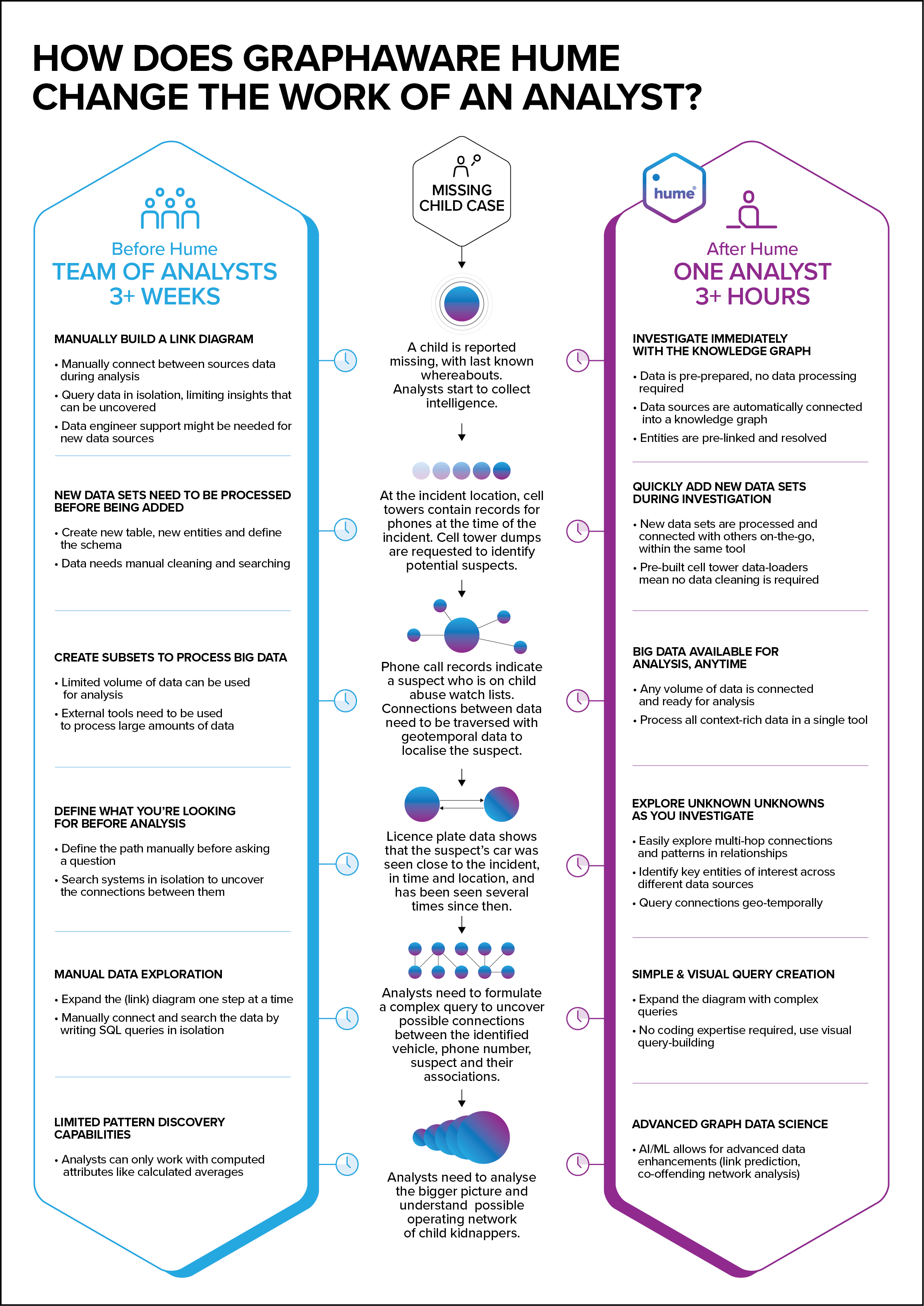“When a child goes missing, every minute counts. With Hume, we don’t have to start from scratch every time an event like this is reported. Our data is available and ready to be analysed. We can act fast and save lives. Data Science Lead – Government agency”
When solving a crime, the answer is usually hidden in data. That’s why a police analyst’s capability crucially depends on the tools he uses. GraphAware Hume not only helps analysts to analyse large datasets from disparate sources on a single canvas, but allows for even more accelerated analysis. Because it operates on a graph database, and leverages graph science to allow advanced analysis, uncovering complex multi-hop connections across disparate datasets of structured and unstructured data becomes faster.
How does GraphAware Hume change the work of an intelligence analyst when solving crime?
It can cut down their work from 3 weeks to 3 hours, because analysts can:
- Investigate Immediately
- Add new data sets on-the-go
- Analyse big data, anytime.
- Explore unknown unknowns
- Create queries simply and visually
- And leverage advanced graph science paired with artificial intelligence or machine-learning
Take a look at the infographic below, for a real-world example of how a police analyst’s work changes thanks to GraphAware Hume – by leveraging the power of graph technology all throughout the stack.

